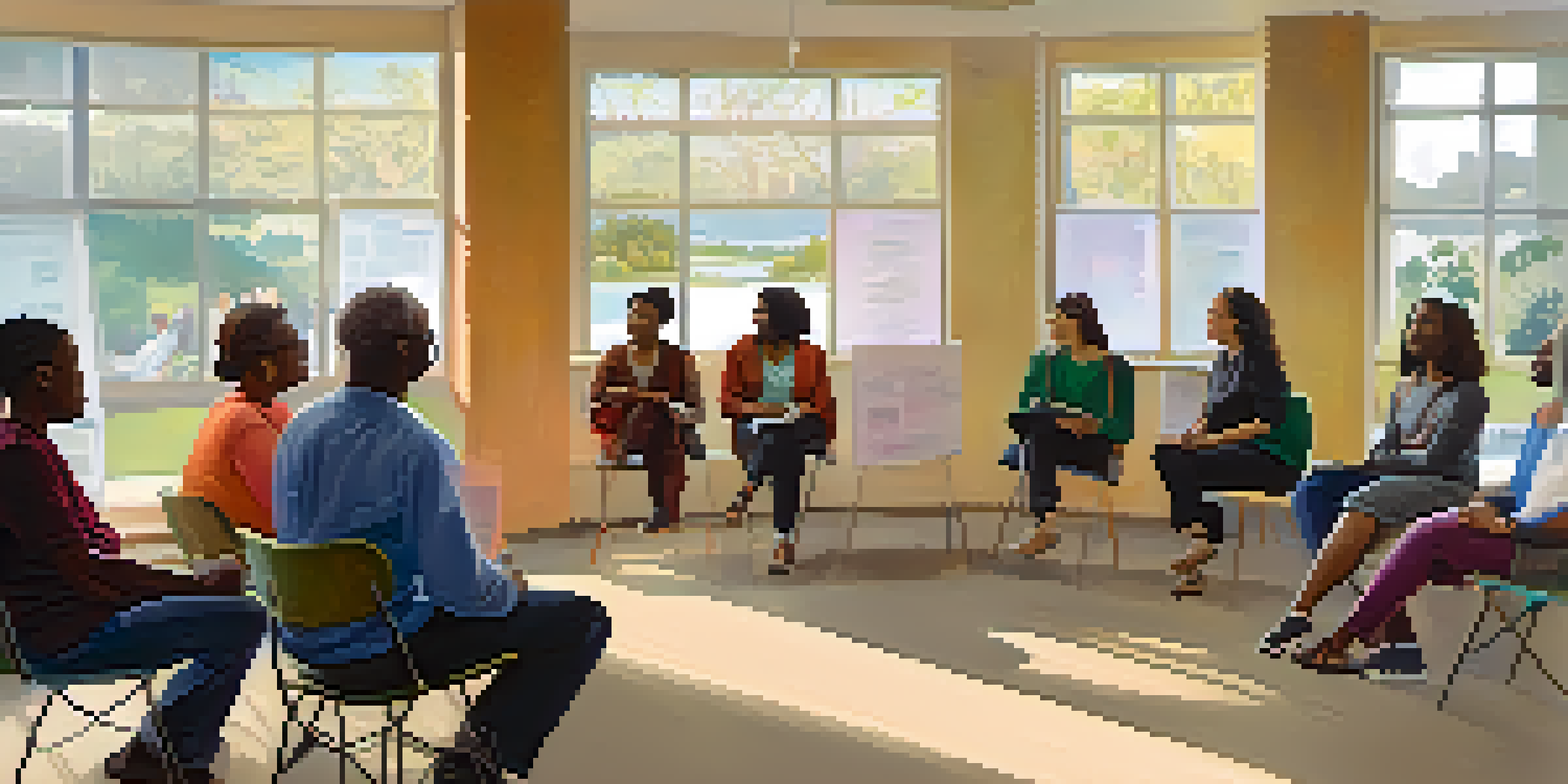Sleep Disorders: The Role of Community Awareness and Support

What Are Sleep Disorders and Their Impact?
Sleep disorders encompass a range of issues that affect sleep quality, including insomnia, sleep apnea, and narcolepsy. These conditions can lead to significant daytime fatigue and affect overall health and wellness. For instance, someone with untreated sleep apnea may experience loud snoring and frequent awakenings, leading to irritability and decreased productivity.
Sleep is the best meditation.
The impact of sleep disorders goes beyond just the individual; it can ripple through families and communities. Children of parents with sleep issues may struggle academically due to lack of support at home. Furthermore, the societal costs related to healthcare and lost productivity can be staggering, emphasizing the need for awareness and intervention.
Understanding the symptoms and consequences of sleep disorders is crucial for fostering a supportive environment. Communities that recognize these issues can lead to better health outcomes for everyone involved, creating a culture where seeking help is normalized.
The Importance of Community Awareness
Community awareness plays a vital role in addressing sleep disorders. When people are informed about the signs and symptoms, they are more likely to seek help or support those in need. For example, a neighborhood workshop can educate residents on recognizing insomnia and its effects, encouraging conversations about mental health.

Awareness campaigns can also reduce stigma surrounding sleep disorders. When communities openly discuss these issues, individuals feel more comfortable admitting their struggles and seeking assistance. It breaks down barriers and fosters a sense of belonging, which is essential for mental and emotional health.
Community Awareness is Key
Educating communities about sleep disorders encourages individuals to seek help and support each other.
Moreover, the more we talk about sleep issues, the more resources become available. Communities can organize support groups, invite healthcare professionals for talks, and even create online forums to share experiences and tips, making it easier for individuals to find the help they need.
How Support Groups Make a Difference
Support groups provide a safe space for individuals dealing with sleep disorders to share their experiences. These gatherings can help participants realize they are not alone in their struggles, creating a sense of camaraderie and understanding. Imagine sitting in a circle, sharing stories that resonate with others—this connection can be incredibly healing.
The greatest weapon against stress is our ability to choose one thought over another.
In addition to emotional support, these groups often provide practical advice and coping strategies. Members might exchange tips on sleep hygiene or discuss effective treatments they’ve tried. This collective knowledge can empower individuals to take action and improve their sleep health.
Moreover, support groups can also serve as a bridge to professional help. Many members may feel encouraged to seek therapy or consult a sleep specialist after hearing success stories from others, creating a pathway to healing and recovery.
Educational Initiatives: Spreading the Word
Educational initiatives are essential for raising awareness about sleep disorders. Schools, workplaces, and community centers can host workshops and seminars to inform people about the importance of sleep and how to identify problems. Just like we have fire drills, we should have sleep health drills to ensure everyone knows what to do in case of sleep issues.
Distributing informative materials, such as flyers or social media posts, can also reach a wider audience. These resources can debunk myths about sleep disorders and promote evidence-based practices for improving sleep quality. By making this information accessible, communities empower individuals to take charge of their health.
Support Groups Foster Connection
Support groups provide a safe space for individuals to share experiences and practical advice, enhancing their journey towards better sleep health.
Additionally, partnerships with healthcare providers can enhance these initiatives. By collaborating with local clinics or hospitals, communities can provide expert insights and resources that may not otherwise be available, further enriching the educational experience.
The Role of Technology in Community Support
Technology plays a growing role in supporting individuals with sleep disorders. Mobile apps that track sleep patterns or offer relaxation techniques can be shared within communities, encouraging collective improvement in sleep health. Imagine a neighborhood challenge where everyone tries a different app to find what works best for them.
Online forums and social media groups can also be powerful tools for support. They allow individuals to connect with others experiencing similar issues, share advice, and celebrate successes. This virtual community can provide real-time support, especially for those who may feel isolated.
Moreover, telehealth services have made it easier than ever for individuals to access professional support. With just a few clicks, people can consult with sleep specialists from the comfort of their homes, breaking down geographical barriers and making care more accessible.
The Impact of Local Events and Campaigns
Local events, such as sleep fairs or awareness walks, can significantly boost community engagement around sleep disorders. These events can provide valuable information, resources, and a sense of community, helping to normalize discussions about sleep health. Imagine walking through a fair filled with booths offering tips, screenings, and even relaxation activities.
Campaigns can also encourage communities to take action. For instance, a month dedicated to sleep awareness can include daily tips, challenges, and success stories shared on local platforms. This collective effort not only raises awareness but also fosters a culture of support and understanding.
Technology Enhances Support Access
Mobile apps and online forums facilitate community support, making it easier for individuals to track their sleep and connect with others.
By actively participating in these events, individuals can educate themselves and others, turning knowledge into action. This sense of community involvement can empower people to advocate for better sleep health resources in their neighborhoods.
Moving Forward: Creating a Supportive Environment
Creating a supportive environment for individuals with sleep disorders starts with open dialogue. Communities should encourage conversations about sleep health, making it a normal topic of discussion just like nutrition or exercise. This shift can help individuals feel more comfortable sharing their struggles and seeking help.
Additionally, fostering partnerships among local organizations can amplify efforts to raise awareness. Schools, healthcare providers, and community groups can collaborate to create comprehensive programs that address sleep health from multiple angles. By working together, they can provide a robust support system for those in need.

Ultimately, the goal is to create a community where individuals feel valued and supported in their journey toward better sleep. Through awareness, education, and compassion, we can build a healthier environment that promotes well-being for everyone.